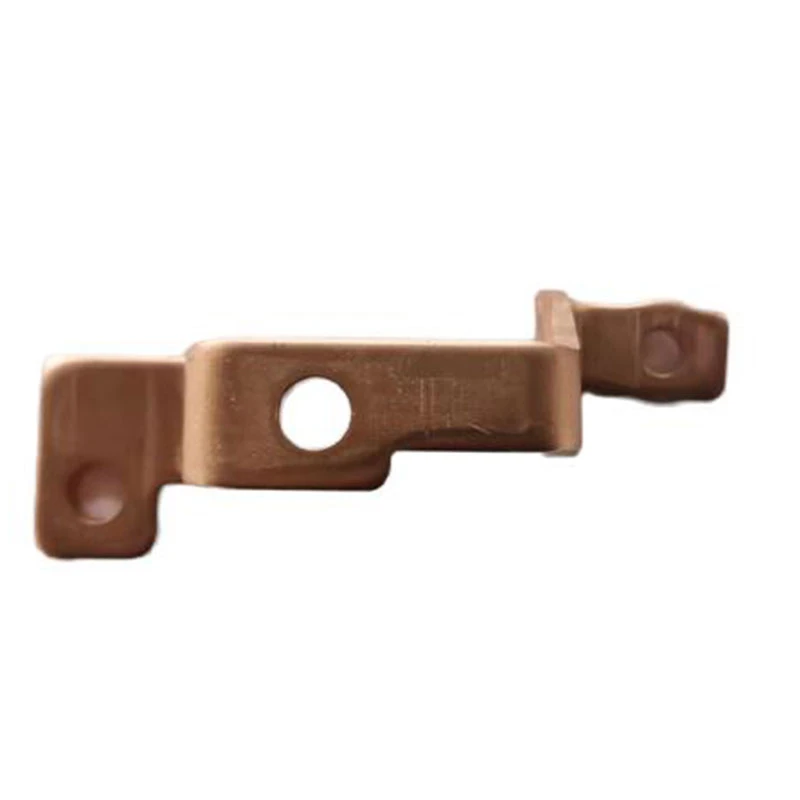Optimizing Process Variables in Abrasive Jet Machining for Enhanced Performance and Efficiency
Process Parameters of Abrasive Jet Machining
Abrasive Jet Machining (AJM) is a non-traditional machining process that utilizes a high-velocity jet of air or gas mixed with abrasive particles to erode material from a workpiece. This process is especially valuable for machining hard or brittle materials that are challenging to work with traditional methods. Understanding the various process parameters of AJM is crucial for optimizing machining performance and achieving desired results.
1. Abrasive Material
The selection of abrasive material is one of the critical factors in AJM. Common abrasives include aluminum oxide, silicon carbide, and garnet, each with its own properties affecting cutting efficiency. The hardness, shape, and size of the abrasive particles play pivotal roles in the material removal rate (MRR) and surface finish. Hard materials often result in higher MRR, while the shape influences the way particles interact with the workpiece surface.
2. Abrasive Particle Size
The particle size of the abrasive significantly affects the machining process. Smaller particles yield finer surface finishes but may reduce MRR due to the limited cutting ability. Conversely, larger particles increase MRR but can lead to a rougher surface finish and deeper penetration into the workpiece material. Generally, an optimal balance of particle size is required to achieve specific machining goals.
3. Nozzle Geometry
The design and shape of the nozzle where the air or gas and abrasive mixture exits are crucial in determining the efficiency of the machining process. Different nozzle designs, such as converging, diverging, or straight nozzles, influence the velocity and shape of the abrasive jet. The angle of the nozzle also affects the impact angle of the abrasive particles, which can influence the effectiveness of the material removal process.
4. Jet Pressure
process parameters of abrasive jet machining

The pressure of the gas or air used to propel the abrasive particles is another essential parameter. Higher jet pressures typically lead to increased velocities of the abrasive particles, which can enhance MRR and efficiency. However, excessively high pressure may cause damage to the workpiece or lead to the wear and tear of the nozzle. Therefore, it is critical to determine the optimal pressure settings for each specific application.
5. Standoff Distance
Standoff distance refers to the gap between the nozzle and the surface of the workpiece. This distance can significantly affect the energy and concentration of the abrasive jet. A shorter standoff distance can enhance the impact force of the jet, resulting in a higher MRR, but may also cause excessive wear on the nozzle. Conversely, increasing this distance may spread the abrasive jet, potentially reducing the machining efficacy. Adjusting the standoff distance is essential for fine-tuning the AJM process based on the desired outcome.
6. Feed Rate
The feed rate is the speed at which the workpiece is moved relative to the abrasive jet. A slower feed rate allows for more extended exposure of the material to the jet, leading to increased material removal; however, it might also affect the overall productivity. On the other hand, a higher feed rate can enhance efficiency but may reduce MRR. Therefore, selecting an appropriate feed rate based on the material type and desired machining time is crucial.
7. Angle of Incidence
The angle at which the abrasive jet strikes the surface of the workpiece is known as the angle of incidence. Adjusting this angle can help control the cutting action. A normal incidence (90 degrees) usually maximizes material removal, while oblique angles can lead to different erosion patterns and surface finishes. Finding the right angle is essential for optimizing performance in AJM applications.
Conclusion
In conclusion, the process parameters of Abrasive Jet Machining are critical factors that influence the effectiveness and quality of the machining process. By carefully selecting abrasive materials, particle sizes, nozzle geometry, jet pressure, standoff distances, feed rates, and angles of incidence, operators can optimize AJM to meet the specific needs of various applications. As technology advances, further research and development in these areas will undoubtedly enhance the capabilities and efficiencies of abrasive jet machining.
-
OEM Sand Cast Pump Valve Fittings - Hairun Sourcing | Precision Engineering, Industrial EfficiencyNewsJul.13,2025
-
EcoGuard 3000 - Sustainable Agriculture Solution&Soil Health ImprovementNewsJul.13,2025
-
SmartAgri Solutions: Smart Farming Tech | AI Analytics & IoT SensorsNewsJul.13,2025
-
[Product Name]-[Company Name]|Business Efficiency&InnovationNewsJul.13,2025
-
Smart Factory Solutions-Industrial Efficiency|Real-Time Analytics&Automated WorkflowNewsJul.12,2025
-
OEM Sand Cast Pump Valve Fittings - Hairun Sourcing | Durable, Reliable, CustomizedNewsJul.12,2025















